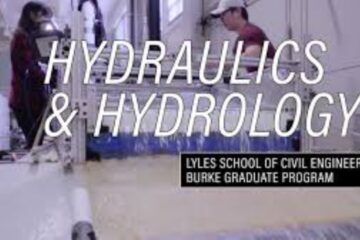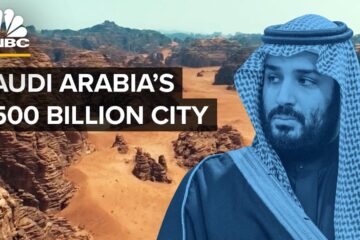Discover the Future: A Tour of Masdar City, UAE’s Sustainable Marvel
Introduction
In the heart of the United Arab Emirates lies a vision of the future: Masdar City. As the world grapples with climate change, environmental degradation, and the depletion of natural resources, Masdar City stands as a beacon of hope, embodying the potential of sustainable urban development. This visionary project, located just outside Abu Dhabi, is not just a city; it is a blueprint for how we might live in harmony with our planet.

In this comprehensive tour of Masdar City, we’ll explore its inception, the innovative technologies that power it, its architectural marvels, and the broader implications it has for sustainable urban development worldwide. Whether you’re a student of architecture, a professional in urban planning, or simply someone interested in the future of our planet, this article will provide a detailed, SEO-optimized exploration of one of the world’s most ambitious sustainability projects.
1. The Vision Behind Masdar City
Masdar City was conceived in 2006 by the Abu Dhabi Future Energy Company, a subsidiary of Mubadala Investment Company. The vision was to create a city that would set the global benchmark for sustainability, combining advanced technology with traditional architecture to minimize energy consumption and reduce carbon emissions.
The city was designed by Foster + Partners, a renowned architectural firm led by Norman Foster. The goal was not only to create a sustainable urban environment but also to foster innovation and collaboration in clean technology and renewable energy. Masdar City is intended to be a global hub for research and development in these fields, attracting companies, researchers, and entrepreneurs from around the world.
2. Urban Planning and Design Principles
Masdar City’s urban planning is grounded in the principles of sustainable development, which are evident in every aspect of its design. The city is built on a raised platform to allow natural ventilation, reducing the need for air conditioning. Its narrow streets and compact layout are inspired by traditional Arabic architecture, designed to create shade and reduce the urban heat island effect.

The city is car-free, with transportation provided by a network of electric vehicles and a personal rapid transit (PRT) system. This not only reduces carbon emissions but also creates a pedestrian-friendly environment. The PRT system is a key feature of Masdar City’s design, reflecting the city’s commitment to sustainability and innovation.
3. Renewable Energy: The Lifeblood of Masdar City
One of the most remarkable aspects of Masdar City is its reliance on renewable energy. The city is powered by a 10 MW solar photovoltaic plant, along with additional rooftop solar panels, making it one of the largest solar installations in the Middle East. This commitment to solar energy is central to Masdar City’s goal of becoming one of the world’s most sustainable urban developments.
In addition to solar power, Masdar City is exploring other forms of renewable energy, including wind and geothermal energy. The city’s energy strategy is based on the principles of efficiency, diversification, and sustainability, ensuring that its energy needs are met with minimal environmental impact.
4. Water Conservation and Management
Water is a precious resource in the UAE, and Masdar City has implemented innovative solutions to conserve and manage it. The city uses a combination of greywater recycling, low-flow fixtures, and smart irrigation systems to reduce water consumption. Treated wastewater is used for landscaping, reducing the demand for fresh water.
Masdar City also features a district cooling system, which uses chilled water to cool buildings instead of traditional air conditioning. This system is powered by renewable energy and is much more efficient, reducing both energy consumption and water use.
5. Architecture: A Fusion of Tradition and Innovation
The architecture of Masdar City is a blend of traditional Arabic design and cutting-edge technology. Buildings are designed to maximize natural light and ventilation, reducing the need for artificial lighting and air conditioning. The city is home to some of the most innovative green buildings in the world, including the Masdar Institute of Science and Technology, which is LEED Platinum certified.
The city’s architecture also reflects its commitment to sustainability in other ways. For example, the buildings are constructed using low-carbon cement and other sustainable materials. The city also features a number of green roofs and living walls, which help to insulate buildings and reduce the urban heat island effect.
6. The Masdar Institute: A Hub for Innovation
At the heart of Masdar City is the Masdar Institute of Science and Technology, a graduate-level research university focused on advanced energy and sustainable technologies. Established in collaboration with the Massachusetts Institute of Technology (MIT), the institute is a key part of Masdar City’s mission to become a global leader in clean technology and renewable energy.
The institute’s research covers a wide range of fields, including renewable energy, energy efficiency, water conservation, and sustainable urban development. It is also home to several research centers and laboratories, where cutting-edge research is conducted in collaboration with industry partners and other academic institutions.
7. The Role of Technology in Masdar City
Technology plays a crucial role in the functioning of Masdar City. The city is equipped with a smart grid, which uses advanced sensors and analytics to optimize energy consumption and reduce waste. The grid is integrated with the city’s renewable energy systems, allowing for real-time monitoring and management of energy production and consumption.
In addition to the smart grid, Masdar City is also exploring the use of artificial intelligence (AI) and the Internet of Things (IoT) to further enhance its sustainability. These technologies are being used to optimize everything from transportation and waste management to water use and building performance.
8. Transportation: Moving Toward a Zero-Carbon Future
Transportation is a key component of Masdar City’s sustainability strategy. The city is designed to be car-free, with transportation provided by a network of electric vehicles and the personal rapid transit (PRT) system. The PRT system consists of autonomous, electric-powered pods that transport passengers to their destinations quickly and efficiently.
In addition to the PRT system, Masdar City also features a fleet of electric buses and bicycles, providing residents and visitors with a variety of sustainable transportation options. The city’s transportation network is integrated with its smart grid, allowing for real-time monitoring and optimization of energy use.
9. Waste Management: Closing the Loop
Masdar City has implemented a comprehensive waste management system designed to minimize waste and maximize recycling. The city follows a “zero waste to landfill” policy, with a goal of recycling or composting all waste generated within the city. Organic waste is composted and used for landscaping, while recyclable materials are processed and reused.
The city also uses advanced waste-to-energy technology to convert non-recyclable waste into energy. This not only reduces the amount of waste sent to landfill but also contributes to the city’s renewable energy production.
10. The Social and Economic Impact of Masdar City
Masdar City’s impact extends beyond its physical infrastructure. The city is a hub for innovation and collaboration, attracting companies, researchers, and entrepreneurs from around the world. It is home to the Masdar Free Zone, which offers incentives and support for businesses focused on clean technology and renewable energy.
The city also plays a key role in the UAE’s broader sustainability goals, serving as a model for other cities in the region and around the world. By demonstrating the potential of sustainable urban development, Masdar City is helping to shape the future of cities globally.
11. Challenges and Criticisms
Despite its many achievements, Masdar City has faced its share of challenges and criticisms. One of the biggest challenges has been the high cost of construction, which has led to delays and changes in the project’s scope. The city’s ambitious goal of becoming the world’s first zero-carbon city has also proven difficult to achieve, with some critics arguing that the city’s reliance on imported materials and technology undermines its sustainability claims.
Another criticism is that the city has struggled to attract residents and businesses. While the city is home to several major companies and research institutions, its population remains small, and many of its buildings are still unoccupied. This has raised questions about the city’s long-term viability and whether it can truly serve as a model for sustainable urban development.
12. The Future of Masdar City
Looking ahead, the future of Masdar City remains bright. The city continues to evolve and adapt, incorporating new technologies and strategies to enhance its sustainability. Recent developments include the expansion of the city’s renewable energy capacity, the introduction of new transportation options, and the development of new residential and commercial spaces.
As the world continues to grapple with the challenges of climate change and urbanization, Masdar City offers a glimpse into what the future of cities might look like. While the city is not without its challenges, it remains a powerful symbol of what can be achieved when vision, technology, and sustainability come together.
13. Lessons from Masdar City for Sustainable Urban Development
Masdar City offers several important lessons for sustainable urban development. One of the key takeaways is the importance of integrating sustainability into every aspect of a city’s design and operation. From energy and water management to transportation and waste management, Masdar City demonstrates the potential of a holistic approach to sustainability.
Another important lesson is the role of technology in achieving sustainability goals. Masdar City’s use of renewable energy, smart grids, and advanced waste management systems highlights the potential of technology to reduce a city’s environmental impact and improve the quality of life for its residents.
Finally, Masdar City underscores the importance of collaboration and innovation in addressing the challenges of sustainable urban development. The city’s success is the result of collaboration between governments, businesses, and academic institutions, and its continued evolution will depend on the ability of these stakeholders to work together to develop new solutions and strategies.
14. Conclusion: Masdar City as a Blueprint for the Future
Masdar City is more than just a sustainable urban development project; it is a blueprint for the future of cities. As the world faces the twin challenges of climate change and urbanization, Masdar City offers a model for how cities can grow and develop in a way that is both environmentally sustainable and economically viable.
While the city is still a work in progress, its achievements to date are impressive, and its potential is enormous. By demonstrating the possibilities of sustainable urban development, Masdar City is helping to shape the future of cities around the world. Whether you’re a student, a professional, or simply someone interested in the future of our planet, Masdar City is a project that deserves your attention.
15. Final Thoughts: The Global Impact of Masdar City
As we conclude our tour of Masdar City, it’s important to consider the broader implications of this project for the world. Masdar City is not just a local initiative; it is a global model for sustainable urban development. Its successes and challenges offer valuable insights for other cities and regions looking to reduce their environmental impact and enhance the quality of life for their residents.
Masdar City’s influence extends beyond the UAE, inspiring similar projects in other parts of the world. From the smart cities of Europe to the eco-cities of Asia, the principles and technologies pioneered in Masdar City are being adopted and adapted to local contexts, helping to drive the global transition to sustainable urban development.
In a world where cities are increasingly seen as the key to addressing the challenges of climate change and sustainability, Masdar City stands out as a powerful example of what can be achieved when vision, innovation, and sustainability come together. As we look to the future, the lessons and insights gained from Masdar City will continue to shape the way we think about and build our cities, paving the way for a more sustainable and resilient world.
If you want to get more knowledge about this so read more.
If you want more articles about Civil Engineering click on link.





